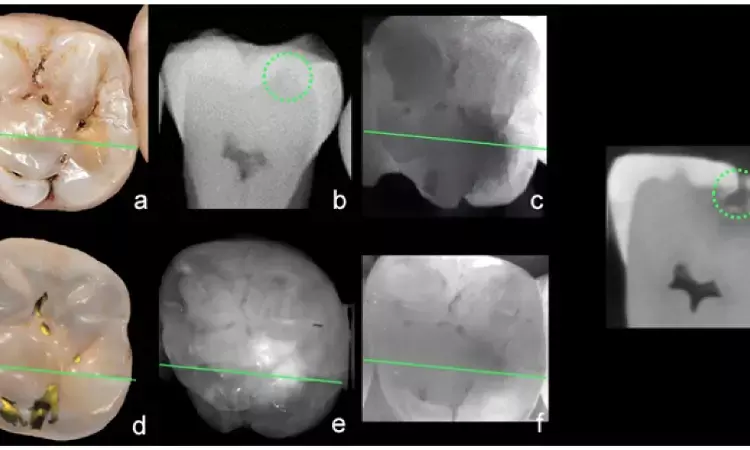- Home
- Medical news & Guidelines
- Anesthesiology
- Cardiology and CTVS
- Critical Care
- Dentistry
- Dermatology
- Diabetes and Endocrinology
- ENT
- Gastroenterology
- Medicine
- Nephrology
- Neurology
- Obstretics-Gynaecology
- Oncology
- Ophthalmology
- Orthopaedics
- Pediatrics-Neonatology
- Psychiatry
- Pulmonology
- Radiology
- Surgery
- Urology
- Laboratory Medicine
- Diet
- Nursing
- Paramedical
- Physiotherapy
- Health news
- Fact Check
- Bone Health Fact Check
- Brain Health Fact Check
- Cancer Related Fact Check
- Child Care Fact Check
- Dental and oral health fact check
- Diabetes and metabolic health fact check
- Diet and Nutrition Fact Check
- Eye and ENT Care Fact Check
- Fitness fact check
- Gut health fact check
- Heart health fact check
- Kidney health fact check
- Medical education fact check
- Men's health fact check
- Respiratory fact check
- Skin and hair care fact check
- Vaccine and Immunization fact check
- Women's health fact check
- AYUSH
- State News
- Andaman and Nicobar Islands
- Andhra Pradesh
- Arunachal Pradesh
- Assam
- Bihar
- Chandigarh
- Chattisgarh
- Dadra and Nagar Haveli
- Daman and Diu
- Delhi
- Goa
- Gujarat
- Haryana
- Himachal Pradesh
- Jammu & Kashmir
- Jharkhand
- Karnataka
- Kerala
- Ladakh
- Lakshadweep
- Madhya Pradesh
- Maharashtra
- Manipur
- Meghalaya
- Mizoram
- Nagaland
- Odisha
- Puducherry
- Punjab
- Rajasthan
- Sikkim
- Tamil Nadu
- Telangana
- Tripura
- Uttar Pradesh
- Uttrakhand
- West Bengal
- Medical Education
- Industry
Intraoral scanners incorporating near-infrared imaging promising real-time diagnostic tool for caries

Intraoral scanners incorporating near-infrared imaging promising real-time caries diagnostic tool suggests a new study published in the Journal of Prosthodontics.
A study was done to describe and discuss the benefits and drawbacks of various dental caries diagnostic techniques, including the use of intraoral scanners for caries diagnosis based on near-infrared imaging (NIR) technology.
A MEDLINE search from 1980–2023 focused on dental caries diagnostic techniques, emphasizing intraoral scanners using NIR technology. Alternative caries detection methods were also evaluated for their advantages and limitations, enabling a comparison with NIR. The review included traditional caries tools, the latest detection methods, and NIR's role in intraoral scanners, drawing from case reports and both in vivo and in vitro studies. Keywords like “caries detection,” “intraoral scanners,” and “Near Infrared Imaging (NIRI)” guided the search. After screening titles and abstracts for relevance, full texts with valuable insights were thoroughly analyzed. The data was grouped into three: traditional diagnostics, advanced digital methods, and intraoral scanner-based detection.
Results
This comprehensive narrative review described and discussed the current state of dental caries diagnostic methods, given the insufficient number of clinical investigations suitable for a systematic review. Traditional caries diagnosis techniques have shown variable accuracy dependent on a dentist's experience and the potential over-removal of healthy tooth structures. Intraoral scanners have emerged as a novel caries detection method, because of their integration of NIR technology. Various studies have confirmed the efficacy of NIR in detecting interproximal caries and in the early diagnosis of non-cavitated caries. Specifically, intraoral scanners have demonstrated promising results, proving comparable to established diagnostic methods like bitewing radiography. Nevertheless, while the integration of NIR into intraoral scanners seems promising, the technology still faces challenges, notably its accuracy in detecting secondary and subgingival cavities. However, with anticipated integrations of AI, NIR in intraoral scanners could revolutionize early caries detection.
Intraoral scanners with NIR technology offer non-destructive imaging, real-time lesion visuals, and enhanced patient communication. Although comparable to bitewing radiography in some studies, a universally accepted diagnostic tool is lacking. Future research should compare them with existing methods, focusing on clinical outcomes, cost-effectiveness, and patient acceptance.
Reference:
Lin, WS, Alfaraj, A, Lippert, F, Yang, CC. Performance of the caries diagnosis feature of intraoral scanners and near-infrared imaging technology—A narrative review. J Prosthodont. 2023; 1–11. https://doi.org/10.1111/jopr.13770
Keywords:
Intraoral, scanners, incorporating, near-infrared, imaging, promising, real-time, caries, diagnostic tool, Lin, WS, Alfaraj, A, Lippert, F, Yang, CC, Journal of Prosthodontics
Dr. Shravani Dali has completed her BDS from Pravara institute of medical sciences, loni. Following which she extensively worked in the healthcare sector for 2+ years. She has been actively involved in writing blogs in field of health and wellness. Currently she is pursuing her Masters of public health-health administration from Tata institute of social sciences. She can be contacted at editorial@medicaldialogues.in.
Dr Kamal Kant Kohli-MBBS, DTCD- a chest specialist with more than 30 years of practice and a flair for writing clinical articles, Dr Kamal Kant Kohli joined Medical Dialogues as a Chief Editor of Medical News. Besides writing articles, as an editor, he proofreads and verifies all the medical content published on Medical Dialogues including those coming from journals, studies,medical conferences,guidelines etc. Email: drkohli@medicaldialogues.in. Contact no. 011-43720751


